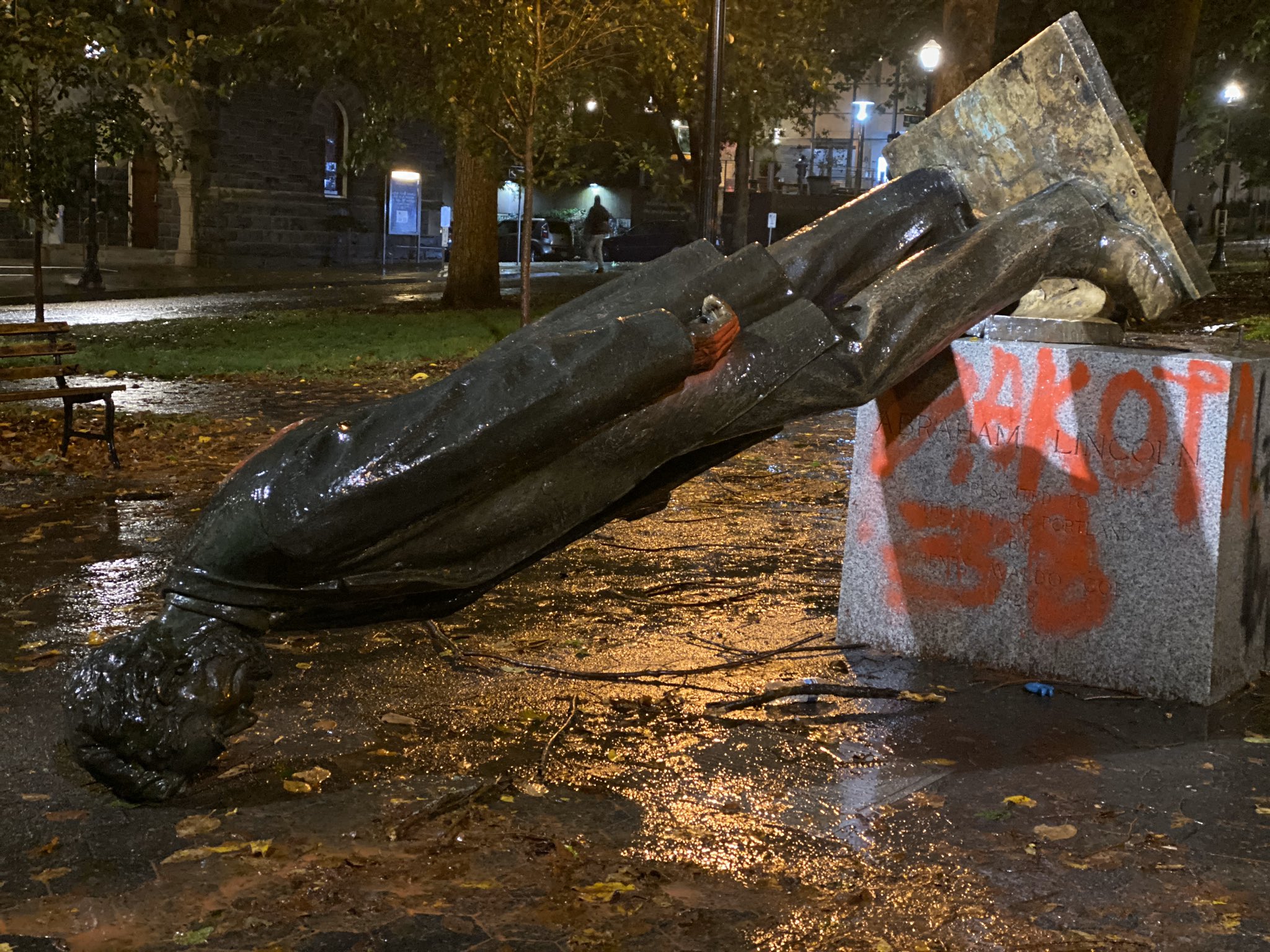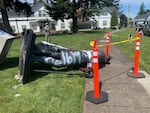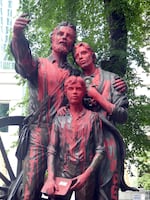
Protesters in Portland toppled multiple statues, including this one of President Abraham Lincoln, on Sunday, Oct. 11, 2020, during an event they called "Indigenous People's Day of Rage."
Sergio Olmos
Portland leaders have announced a partnership with Lewis & Clark College to figure out what to do with five statues that were toppled or removed during the racial justice protests of 2020.
So far, city leaders have plans to restore only one, the Thompson Elk that stood on Southwest Main Street next to Lownsdale Square. They haven’t decided what to do with fallen memorials to George Washington, Abraham Lincoln, Theodore Roosevelt, the newspaper editor Harvey Scott and a pioneer family tableau called “Promised Land.”
Commissioner Carmen Rubio, who oversees both the parks bureau and city arts efforts, said the new partnership will help city leaders meet their responsibilities for maintaining an inclusive art collection that respects diverse cultural histories.
She said there are valid questions about some of the monuments and a public discussion is required.
“Anything less, and we will be debating these monuments for years to come,” she said.
Rubio said she does not want to see a repeat of the damage.
Cities across the country are dealing with similar questions about what to do with public monuments to figures whose legacies have been reexamined in recent years. In Baltimore, a statue of Christopher Columbus was torn down and thrown into the waters of the Jones Falls. Statues of Confederate soldiers and generals have been removed in other cities.
In the middle of the social justice protests, former president Donald Trump signed an executive order protecting monuments. He also tweeted about jailing protesters.

A statue of George Washington was pulled down from the lawn outside the German American Society in Northeast Portland on June 18, 2020.
Rebecca Ellis/OPB
Lois Davis, a spokesperson with Lewis & Clark, said the school is just at the beginning of the process: “We are pleased to be part of the discussion about this important issue, which is of concern both locally and nationally.”
Portland’s new “Cultural Planning Process” with Lewis & Clark and other stakeholders will start a community discussion. A committee will also look into the history of each monument to see how it came to be erected in the first place.
Rubio said all the findings will be shared before any decisions are made about the future of the monuments.
“(The cultural planning committee) will be asked to carry a public engagement process focused on two areas: the immediate question related to each of the five monuments and any longer-term questions about needed changes about the city’s public art decisions,” she said.
The work is expected to start in January with public discussions in the spring. The hope is that a plan with findings and recommendations will be sent to the city council by next fall.
“I appreciate the community’s patience as we ensure that we get this done right,” Rubio said. “The process and decisions we make need to honor the social justice movement that brought us the questions before us today.”

Protesters doused a sculpture honoring Oregon settlers in red paint and messages against colonialism during protests in 2020. The monument, called "The Promised Land" was installed in Portland's Chapman Square in 1993.
Courtney Sherwood / OPB
Correction: This story has been updated to correct the caption on a photo of a statue doused in red paint, which originally included inaccurate information about the people portrayed.



